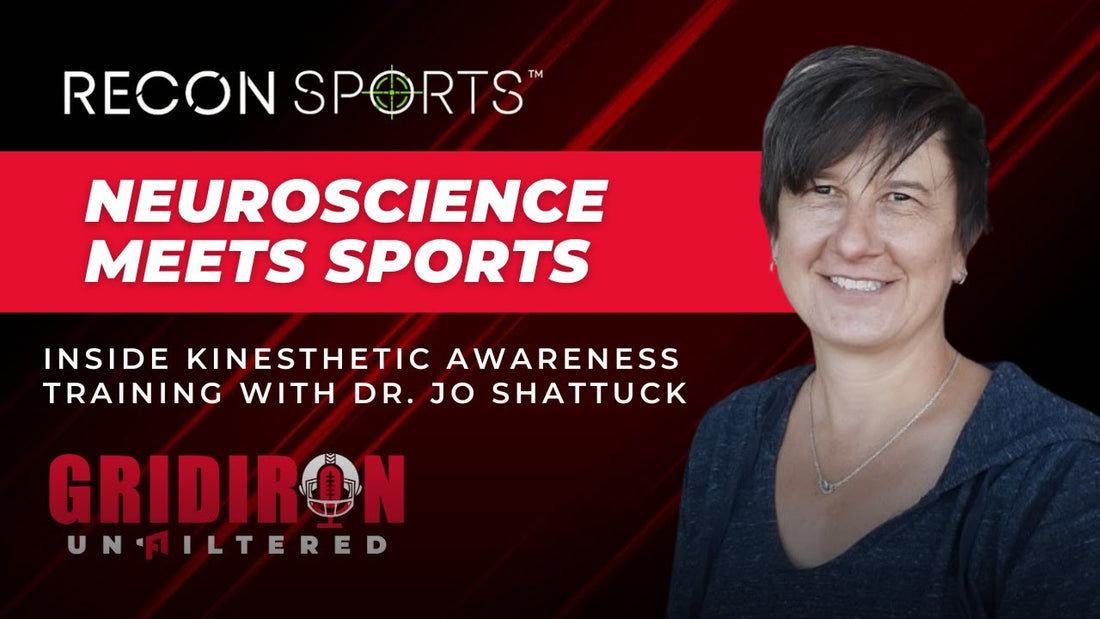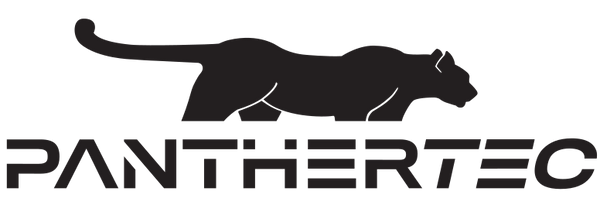
Feel Over Words: Dr. Jo Shattuck on Training the Brain–Body Connection
Share
If you’ve ever been told to “keep your elbow in” and still couldn’t make your body do it, you already know the gap: language doesn’t always lead to effective movement.
On the latest Gridiron Unfiltered, host Danny Davis sits down with Dr. Jo Shattuck, a neuroscientist, former world-ranked pro racquetball player, and founder of PantherTec, to explain how the brain learns movement, why feel beats verbal cues, and how haptics can accelerate skill without piling on mindless reps.
You Can’t Separate Brain and Body
Dr. Shattuck’s story moves from pro athlete to scientist to entrepreneur, but one belief runs through it all: the brain and body are one system.
That realization started in a moment of silence. While teaching a clinic in Japan, she found herself trying to coach players who didn’t speak English.
“About fifteen minutes in, I stopped talking,” she laughs. “I was just moving, showing, reacting, and suddenly they were improving.”
The experience revealed something obvious yet overlooked: the nervous system learns movement through sensation, not vocabulary.
The Two Coordinates of Skill: “Where” and “When”
Every skill has two coordinates, Shattuck explains: where your body is in space, and when it moves. “If those two don’t match,” she says, “you’re not going to move properly, no matter how good your technique is.”
To train that awareness, she uses what she calls “temporal prediction drills”. “Close your eyes, bring your finger to your nose, and say ‘now’ when they touch,” she tells Danny. “You’ll be early or late, but that’s the point. Your brain adjusts automatically. That’s neuroplasticity in action.”
For her, it’s not just about position but about timing.
“The where and the when have to talk to each other,” she adds. “Otherwise, the signal gets lost.”
KAT: Teaching the Body to Feel the Right Rep
That philosophy became the foundation for PantherTec and its flagship product, KAT: Kinesthetic Awareness Training.
Unlike trackers that just record numbers, KAT focuses on feedback. A coach can capture the exact position they want, and the athlete can then reproduce it with their eyes closed. “If a player can’t hit the position standing still,” she says, “they won’t hit it when the ball’s coming at them.”
The device isn’t sport-specific. It works for baseball swings, golf posture, throwing mechanics, and even rehabilitation. “It doesn’t care what movement you teach it,” she explains. “It only knows what you teach it.”
Rethinking Reps
When Danny asks about the 10,000-hour rule, Shattuck laughs. “I’ve got an article coming out called KAT versus the 10,000 Hours, but it’s not really a versus,” she says. “It’s about understanding that it’s not the volume of reps that makes an expert. It’s the right reps, done with awareness.”
She calls it kinesthetic dissonance, aka the gap between what you think you’re doing and what you’re actually doing.
“You only learn when you correct that gap,” she says. “If seventy percent of your reps don’t add value, why keep doing them?… That doesn’t make you better, it just makes the habit deeper.”
Beyond the Numbers
For Shattuck, the real magic of KAT isn’t in its data but in how it changes the athlete’s relationship with movement.
“Everyone’s obsessed with collecting numbers,” she says. “But what happens when the athlete feels what the right movement is instead of just seeing a metric? That’s the breakthrough.”
Professional players use it to recalibrate mechanics through fatigue or injury. Youth athletes use it to finally understand what coaches mean by “stay tall” or “stay closed.” And coaches, she says, use it to “shorten the time between ‘something feels off’ and ‘that’s it.’”
Lessons from an Athlete Turned Founder
Starting Panther Tech wasn’t easy. As she puts it, “One day you’re in a lab talking about brain waves, and the next you’re figuring out payroll.” She credits her athletic background for teaching her persistence.
“Being an athlete helps,” she says. “You go to bed confused, you wake up confused, but you keep moving forward. Progress is a spiral staircase; you might not always face the right way, but you’re still going up.”
The Future is Kinesthetics
When asked what she hopes for the future, Shattuck doesn’t hesitate. “Remember when no one knew what electrolytes were?” she says. “Then Gatorade made it part of everyday vocabulary. I want kinesthetic awareness to be that kind of word in sports, something every coach and athlete understands.”
She imagines a world where feeling movement becomes as common as measuring it. “Neural priming, kinesthetic awareness, these should be part of every warm-up,” she says. “Not because it’s trendy, but because it makes athletes better, faster, and healthier.”
Why You Should Tune Into This Episode
This isn’t a conversation about gadgets. It goes deeper into how athletes can train smarter by tuning into the body’s own feedback system.
In this episode, Dr. Jo Shattuck breaks down simple, science-backed exercises you can try right away, from quick neural-priming drills to kinesthetic awareness techniques to improve timing, movement control, and focus before your next workout or practice.
Listen to the full episode of Gridiron Unfiltered with Dr. Jo Shattuck to learn practical ways to connect your brain and body for sharper, more efficient training sessions.
